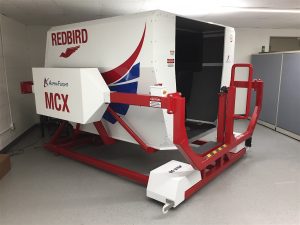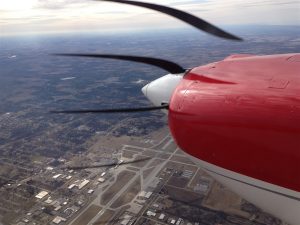Commercial and MEI Combination Course
Get Your Commercial Multi Engine Add-On and Flight Instructor Ratings in One Course
Price: $11760
Synopsis
This Commercial and MEI Combination Course combines your commercial multi engine add-on and MEI training. Free Redbird access. Based on test pilot textbooks. Includes PIC time building needed for MEI at a discount. This course could also be called more precisely a Commercial Multi Engine Add-on and MEI Combination Course.
Multi Engine Add-On and MEI Course - Target Audience
- Commercial Multi Engine Add-On and MEI Ratings: This commercial multi and MEI combination course is for candidates with a Commercial Pilot certificate and a Flight Instructor certificate, who wish to add on an airplane multi engine land rating to both their pilot certificate and their flight instructor certificate at a discount price. (A single engine airplane CFI would be a typical candidate.)
- Prerequisites: a) Commercial Pilot certificate with a (single engine) airplane rating; b) Flight Instructor certificate (with any rating).
Note: This Commercial and MEI Combination Course combines our Accelerated Add-On Course with our MEI Course, and includes at a discount price the time building required to accumulate the 15 hours of multi engine PIC time necessary for the Multi Engine Instructor (MEI) FAA practical test (see 14 CFR 61.183(j)).
Training Times Included
- Course Duration:
5 days of training, plus two days for FAA Practical Tests (typically with an additional day as potential weather backup for the test, at the examiner’s discretion). - Flight Training:
20 hours of dual flight instruction in a Piper PA-34-200 Seneca, equipped with an Aspen PFD and a Garmin GTN 650 GPS. - FAA Practical Tests:
Airplane rental for the two practical tests is included in the course price (for up to two hours each).
The examiner fee of $700 per practical test is not included and payable directly to the examiner on the day of the practical test. - Ground Instruction:
Unlimited ground instruction (review of multiengine and commercial pilot theory, oral exam preparation) is included on the above 5+2 course days. Our detailed, deep ground school is based on FAA and test pilot school textbooks. - Advanced Aviation Training Device (AATD, “flight simulator”):
Access to a Redbird MCX AATD (for instrument approach and multiengine procedure practice) – and instruction therein by a flight instructor – is extra on the above five training days.
Note: Up to 25 hours of our AATD time can be applied towards the 1500 hours required for the Airline Transport Pilot (ATP) certificate. The better your theoretical knowledge, when you arrive, the more time we will be able to spend in the AATD, when we are not flying.
Course Cost
Course Cost: $11760
Includes everything listed on the left.Additional Flight Training Time:
If additional flight training is needed beyond the hours listed on the left, the price is $350/hour for the Piper PA-34-200 Seminole and $60/hour for flight instruction.- Additional Ground Instruction:
Ground instruction during the 5+2 days of the original course days is unlimited. If ground instruction is needed on additional days, it is billed at $60/hour, or $300/half day, or $600/day. Access to the Redbird MCX AATD is extra for up to two additional days during this time.
Course Details and Philosophy
Training Time Table
Below is a suggested training time table for a minimum duration course length for this commercial and MEI combination course. At the customer’s request, we can build in a couple of weather backup and/or rest days. Some candidates may find it beneficial, for instance, to take a day or two off after their first practical test, or come for two individual visits, each culminating in a practical test. This can be arranged on an individual basis, please call us.
Day 1
- Morning:
2 hours of Redbird MCX AATD. Verification that you know all the maneuver procedures (and an opportunity to tie up loose ends); rehearsal of emergency procedures. - Afternoon:
1.5-hour upper airwork flight with instrument approach and 3 landings. Evening:
Ground instruction (review of multiengine theory) or Redbird MCX (instrument approach or multiengine procedure practice), as needed.
Day 2
Morning:
1.5-hour upper airwork flight with instrument approach and 3 landings.Afternoon:
1.5-hour upper airwork flight with instrument approach and 3 landings.Evening:
Ground instruction or Redbird MCX.
Day 3
- Morning:
1.5-hour upper airwork flight with instrument approach and 3 landings. - Afternoon:
1 hour flight: landing practice (or 2 instrument approaches, whichever needs more work). Evening:
Ground instruction (final checkride preparation).
Day 4
Morning:
FAA Practical Test: Commercial Pilot Airplane Multiengine Land Add-On (typically at C65, but an alternate location may be chosen based on weather).Afternoon:
2-hour time building flight from the right seat. Begin of training for multiengine instructor (MEI) rating.Evening:
Ground instruction or Redbird MCX.
Day 5
Morning:
One 2-hour upper airwork flight with instrument approach and 3 landings from right seat.Afternoon:
Two 2-hour upper airwork flights with instrument approach and landing practice from right seat.Evening:
Ground instruction or Redbird MCX.
Day 6
Morning:
Two 1.5-hour upper airwork flights with instrument approach and 3 landings from right seat.Afternoon:
One 2-hour upper airwork flight with instrument approach and landing practice from right seat.Evening:
Ground instruction or Redbird MCX.
Day 7
- Morning or afternoon:
FAA Practical Test: Flight Instructor Airplane Multiengine Add-On (typically at C65, but an alternate location may be chosen based on weather).
Weather Issues
Some of the training can be conducted VFR on top, as many of the training flights in this multi engine add-on and MEI course end in an instrument approach anyway. If the weather is not conducive to flight at all on one of the days, the flying will be compressed into four days, and the bad weather day will be used for ground instruction and procedure and instrument practice in the Redbird MCX AATD. If the weather prevents flying on two training days, the practical tests will have to be postponed. To safeguard against this, we recommend that you arrive for your course one or two days early if the weather forecast is questionable. If the weather is bad on the practical test date, the examiner often has a weather backup date the next day (while we try to arrange this, ultimately but this is up to the examiner though).
Candidate Preparation and Proficiency
This is an accelerated course, and you need to come well prepared. Culminating in two new ratings in 7 days, this commercial multi engine add-on and MEI combination course is demanding. How well you need to prepare, before arriving at our facility, is outlined below. There are three components of preparedness:
Theoretical Knowledge
This course is very achievable for the price advertised. The instructor has gone through a course like this himself originally. But you must prepare at home ahead of time with the training materials which we will send you in advance. You will receive two 1-hour video conferences to help you with this.
During the course we will review all the ground school materials twice: The first time the instructor will remind you of the content and explain anything that may have been unclear during your home study (you must understand after this one explanation). The second time you will present the material to the instructor in a mock oral setting. There will be no time to go through everything twice a day because either you do not understand or do not remember. Furthermore, ideally we would like to take you beyond just the necessary basics for the practical test, so the better prepared you come, the more additional information we can impart on you, which is really one of our training objectives.
Airmanship
You must also be very proficient at airplane flying in general, as there will be no time to get you “back into it”. If you have not flown in the last three months, either get some practice before the course or take our Compressed Course (and expect more flight time). Having some prior flight experience in a single-engine complex airplane is an asset.
On your first flight you will be asked to go through all the practical test maneuvers one by one, and you must already know all the procedures for them and execute them without being prompted for the individual steps. The flights are intended to give you practice to execute the maneuvers within ACS standards (in terms of altitude, heading, bank angle, and airspeed tolerance), not to teach you how to perform the maneuvers in principle. Each maneuver will be flown once on each flight, with the option of practicing a few of the weaker maneuvers a second time if needed; after that, we must move on to the next maneuver (you will get a chance to practice each maneuver on the next flight again).
Instrument Flight
You must be proficient at instrument flight, because you will be required to fly a one-engine-inoperative instrument approach on your practical test. Whether you are formally current and/or had a recent IPC is immaterial; some people successfully prepare with the flight simulator on their home computer. All you need is to be proficient at instrument approaches – IFR clearances and departure/en route procedures are not required.
Each of your upper airwork training flights will end in an instrument approach. While we can do a couple of hours of simulator work to get you used to the avionics layout, in the airplane you will get to fly 4 instrument approaches during the course: generally two LPV (GPS) precision approaches and two VOR approaches (though we recommend you nail the VOR the first time and get yourself a third LPV instead). A fifth instrument approach may be doable if you are good at landings and want to do one instead of the landing practice flight. Any more practice will require extra flight time.
Summary
Unless you have studied all the training materials diligently beforehand and come exquisitely prepared, you will need more flight time (and more ground instruction as well) during our commercial and MEI combination course. We do not promise you will finish in the time advertised; we merely provide you with an environment where you can, if you apply yourself, as other candidates have done before you, and we make it our personal goal to assist you as much as possible.
The commercial multi engine add-on rating is the challenging part of this course, and on par with our 7-hour accelerated add-on course. You must complete this in as few hours as possible, so you can start logging PIC time on and after your practical test. After that, adding the MEI is comparatively easy, as the 15 hours of PIC time you need to accumulate is more than enough to learn to fly and teach from the right seat.




